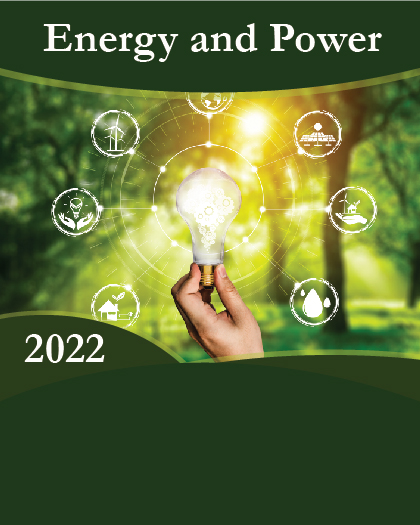
Natural gas is a major source of energy. Liquefied natural gas or LNG is natural gas that has been converted to a liquid form for the ease of storage or transport by cooling natural gas to approximately ?162 ?C. Afterwards, it is stored at essentially atmospheric pressure. Liquefied natural gas takes up about one six hundredth the volume of natural gas in the gaseous state. It is odourless, colourless, non-toxic and non-corrosive.
LNG, or liquefied natural gas, is natural gas that is cooled to -260? Fahrenheit until it becomes a liquid and then stored at essentially atmospheric pressure. Converting natural gas to LNG, a process that reduces its volume by about 600 times ? similar to reducing the volume of a beach ball to the volume of a ping-pong ball ? allows it to be transported internationally via cargo ships.
A LNG filling station is a facility which sells LNG to vehicles. Liquefied natural gas filling stations rely on bulk delivery of fuel via tanker trucks similar to the way in which gasoline and diesel are delivered to filling stations. As LNG needs to be stored at -160 Celsius in order to stay in a liquid state, the fuel is delivered to the station site and stored in a special insulated cryogenic tank. The fuel is pumped from the storage tank and dispensed in a way that is similar to liquid fuels. As LNG dispensers operate at cryogenic temperatures, training is needed in order to dispense the fuel safely. Protective gloves and face shields must also be worn by personnel.
LNG Filling Stations consist of LNG tank, pump skid and submersible pump, booster truck carburetor, carburetor, EAG heater (the three carburetor will change with different processing,), plus liquid machine etc.
The Blue Corridors project?s aim is to establish LNG as a real alternative for medium & long distance transport - first as a complementary fuel and later as an adequate substitute for diesel.
Up to now the common use of gas as fuel was for heavy vehicles running on Natural Gas (NG) only for municipal use, urban buses and garbage collection trucks. In both types of application engine performance and autonomy are good with present technologies, being well adapted to this alternative and cleaner fuel.
This opens the way for LNG (Liquefied Natural Gas), which is the way to transport natural gas by ship to any point of the globe. NG liquefies at 162? C below zero, and the cost in energy is only 5% of the original gas. This state of NG gives LNG the advantage of a very high energy content. Only 1,8 liter of LNG areneeded to meet the equivalent autonomy as using 1 liter of diesel oil.
Commission?s targets for greenhouse gas reduction, air quality targets, while at the same time reducing dependency on crude oil and guarantying supply security. Natural gas heavy duty vehicles already comply with Euro V emission standards and have enormous potential to reach future Euro VI emission standards without complex exhaust gas after treatment technologies, which cause increasing procurement and maintenance costs.
According to this study, over the next five years the LNG Filling Stations market will register a xx% CAGR in terms of revenue, the global market size will reach USD xx million by 2024, from USD xx million in 2019. In particular, this report presents the global market share (sales and revenue) of key companies in LNG Filling Stations business, shared in Chapter 3.
This report presents a comprehensive overview, market shares, and growth opportunities of LNG Filling Stations market by product type, application, key manufacturers and key regions and countries.
This study considers the LNG Filling Stations value and volume generated from the sales of the following segments-
Segmentation by product type- breakdown data from 2014 to 2019, in Section 2.3; and forecast to 2024 in section 11.7.
Mobile Station
Permanent Station
Segmentation by application- breakdown data from 2014 to 2019, in Section 2.4; and forecast to 2024 in section 11.8.
Vehicle
Ship
This report also splits the market by region- Breakdown data in Chapter 4, 5, 6, 7 and 8.
Americas
United States
Canada
Mexico
Brazil
APAC
China
Japan
Korea
Southeast Asia
India
Australia
Europe
Germany
France
UK
Italy
Russia
Spain
Middle East & Africa
Egypt
South Africa
Israel
Turkey
GCC Countries
The report also presents the market competition landscape and a corresponding detailed analysis of the major vendor/manufacturers in the market. The key manufacturers covered in this report- Breakdown data in in Chapter 3.
Kunlun Energy
CNOOC
ENN Energy Holding
Guanghui
Sinopec
Cryostar
Engie
FortisBC
In addition, this report discusses the key drivers influencing market growth, opportunities, the challenges and the risks faced by key manufacturers and the market as a whole. It also analyzes key emerging trends and their impact on present and future development.
Research objectives
To study and analyze the global LNG Filling Stations consumption (value & volume) by key regions/countries, product type and application, history data from 2014 to 2018, and forecast to 2024.
To understand the structure of LNG Filling Stations market by identifying its various subsegments.
Focuses on the key global LNG Filling Stations manufacturers, to define, describe and analyze the sales volume, value, market share, market competition landscape, SWOT analysis and development plans in next few years.
To analyze the LNG Filling Stations with respect to individual growth trends, future prospects, and their contribution to the total market.
To share detailed information about the key factors influencing the growth of the market (growth potential, opportunities, drivers, industry-specific challenges and risks).
To project the consumption of LNG Filling Stations submarkets, with respect to key regions (along with their respective key countries).
To analyze competitive developments such as expansions, agreements, new product launches, and acquisitions in the market.
To strategically profile the key players and comprehensively analyze their growth strategies.
























